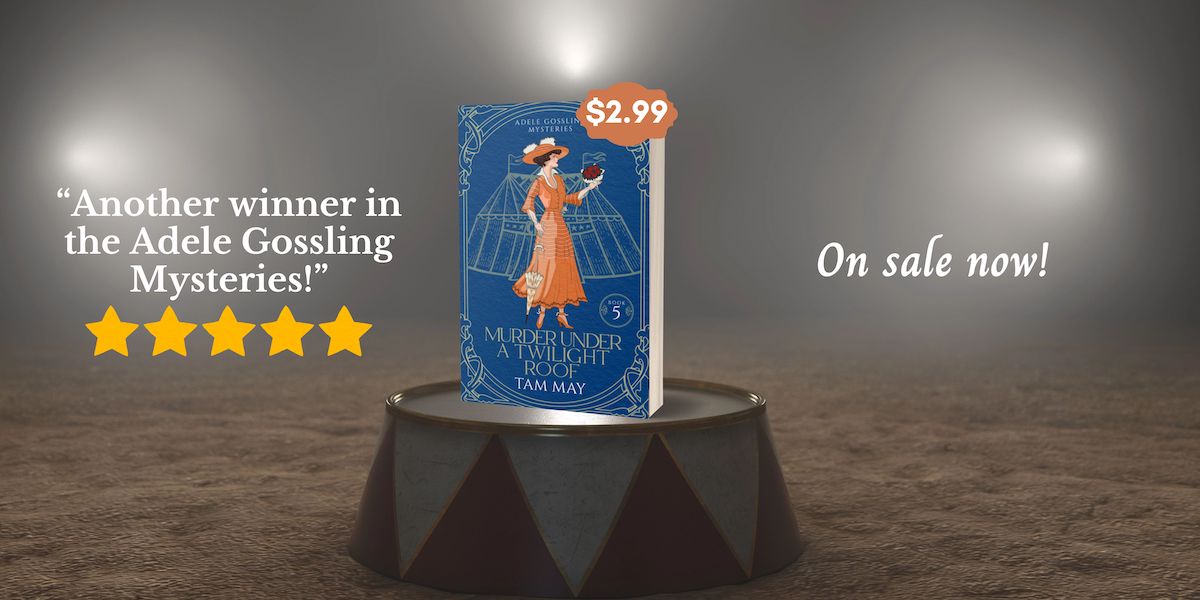I love historical true crime and I love family crimes. That’s one of the reasons why Book 3 of my series uses one of the staples of mystery fiction: The family gathering at the family mansion for the holidays (though usually, the mansion is haunted, which isn’t the case in my book). So it’s no surprise that I, along with many other people, have always been fascinated by Lizzie Borden and the Borden family murder.
There have been countless films, TV shows, and mini-series devoted to unraveling the Lizzie Borden case. I dug up an older movie recently, a made-for-TV film dating back to the 1970s. The Legend of Lizzie Borden (1975) stars Elizabeth Montgomery (aka, Samantha in the 1960s Bewitched series) and follows the events of the murders of Andrew and Abby Borden (Lizzie’s father and stepmother) and trial and acquittal pretty much as many sources report them. The film adds another element, though — it gives a theory (that has been accepted by many) of how the crimes were committed.

Photo Credit: (Elizabeth Montgomery (as Lizzie) and Katherine Helmond (as Emma, Lizzie’s older sister) from a scene from The Legend of Lizzie Borden, where women are picketing in front of the courthouse in support of Lizzie. 10 Feb 1975, Paramount Television: 995577823Xyn/Wikimedia Commons/PD US no notice
The film also takes a definite stance as to whether Lizzie was guilty or not. Keep in mind that, technically, the case is still unsolved. There’s also a lot of controversy over whether the evidence really shows Lizzie’s guilt. This film takes the stance that Lizzie was guilty because she had all the necessary requirements that point toward guilt: means, motive, and opportunity.
But this film brings in also another element to the motive piece I found especially interesting. It didn’t really surprise me, considering the film was made at the height of the second-wave women’s movement in the 1970s. Part of the movement’s purpose was to bring awareness to women’s oppression in the past. We already know the 19th century was not exactly a time of freedom for most women. They were dominated by the ideology of the separate spheres which kept them confined to certain areas of life (home, family, children, church), and venturing outside of that was considered transgressive.
For a young woman of Lizzie’s social standing (small town high society), those confines were present and oppressive. She and her older sister often complained to their father about not being able to go where they liked or do what they liked and of being chained to the house. Both unmarried, they lived with their strict father and stepmother with little or no money of their own and were expected to fulfill household duties assigned to them. The film doesn’t fail to bring this out in some scenes between the family and also in one interesting scene between the prosecuting attorney (who is dead-set on convicting Lizzie) and his own wife (who, much to his chagrin, shows sympathy for Lizzie’s situation).
But could it be the separate spheres actually worked in Lizzie’s favor during the trial? This is a theory many sources put forth and the one the film supports. Since Lizzie was a well-respected, well-to-do young woman, active in her church and high society, and, of course, a woman, she couldn’t possibly have committed such horrendous crimes as to chop up her father and stepmother. Many believe Lizzie was acquitted not based on the evidence but based on who and what she was and the jury’s refusal to believe such a woman could commit murder.
If you want to know the ins and outs of the Lizzie Borden case and weigh in on your opinion on whether she did or did not commit the crimes, I invite you to join my mailing list. In honor of the release of Book 3 of my series, Death At Will, I’ll be talking all next month about the Borden case, bringing forth the details like the crime itself, the victims, the perpetrator, and the trial. But you only get access to those emails if you’re on my list.
Oh, and did I mention you also get a free book if you sign up? If you don’t want to miss out, you can join here.

